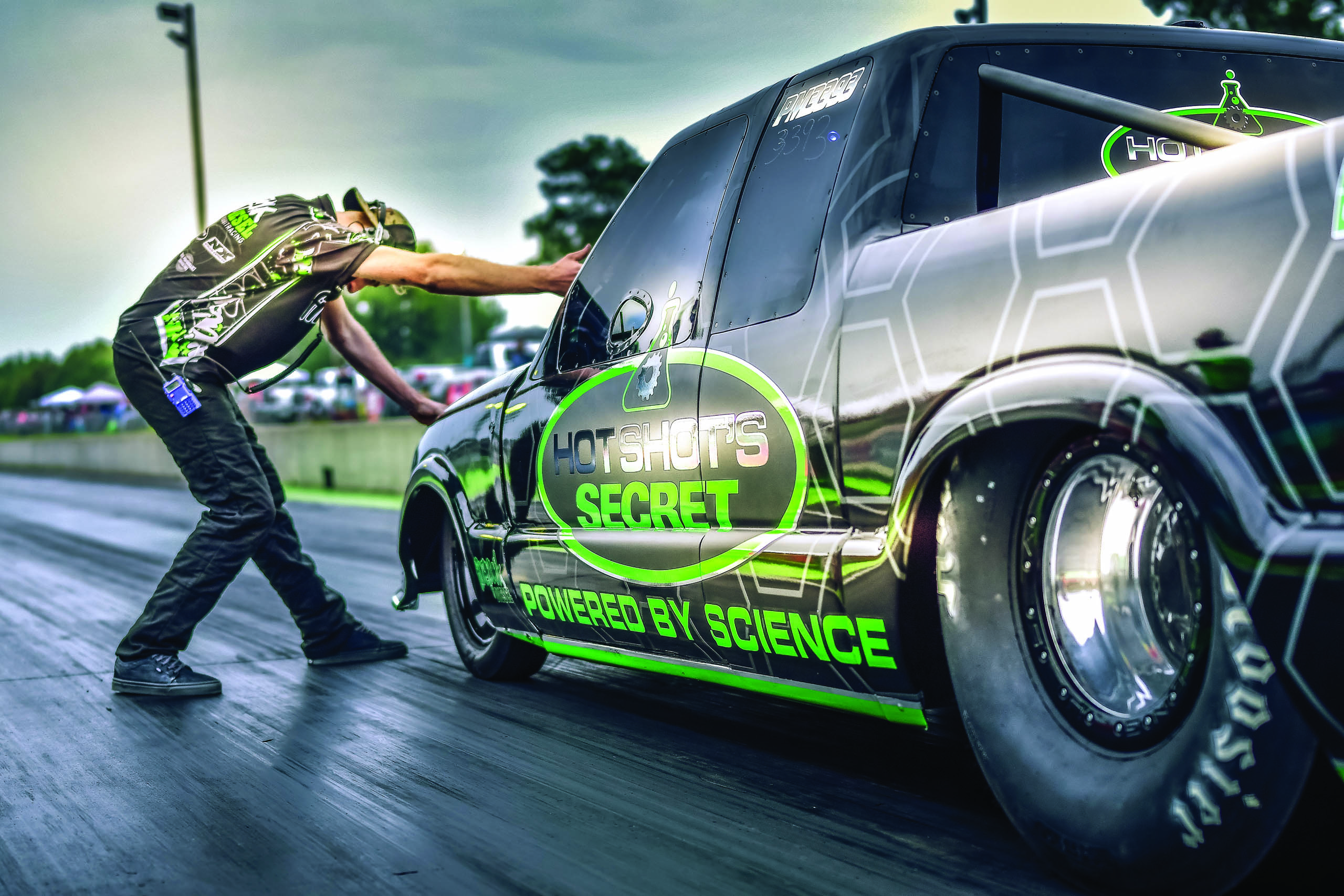Diesel Directional

By David Bellm
Once widely regarded as a quirky niche segment of motorsports, diesels now have the performance to sit shoulder-to-shoulder with more established forms of racing.
“Ten or 20 years ago, diesel racing was a novelty,” observed Jared Alderson of Kill Devil Diesel, Poplar Branch, North Carolina. “It was almost more of an exhibition, like, ‘All right, here comes the smoke show, then we’ll get back to real racing.’”
Fast forward to the present, and the snickering has stopped. Diesel racers are laying down ETs within striking range of the quickest gas cars. That’s brought newfound respect to the category, fueling an increase in mainstream attention for diesel as yet another option for going fast and competing.
To find out where this vibrant, relatively young performance segment is headed, we talked with leading experts in diesel performance. From that, we picked some of the more noteworthy diesel performance and racing trends you’ll likely see at the 2022 SEMA Show.
Mid-3-Sec. Diesels
While the gas drag-racing community pursues gains in hundredths of a second or smaller, diesel racers are shattering records by whole tenths of a second. For example, Firepunk Diesel’s Cummins-powered Chevrolet S-10 Pro Mod steadily marched its way down the 4-sec. eighth-mile range in a short period. Then, in 2021, it set a new record with a blistering 3.99 pass—the first diesel to break the four-second mark. This trend is sure to continue, according to our sources.
Purpose-Built Chassis
Perhaps one of the most startling facts about the recent increases in diesel racing performance is that, so far, it’s been done with relatively little attention given to chassis development. Most racers in diesel’s top ranks are using modified stock frames or castoff gas-car chassis. This is likely to change soon.
“Going lighter is definitely the trend,” observed Alderson. “You can race a 7,000- or 8,000-lb. truck. Guys do it. It’s very popular. But it’s really hard on parts.”
Greater Precision in Tuning
Diesel performance is still largely uncharted territory; it simply doesn’t have as many proven standards and baseline methods as gas engines. But as the segment gets more established, it’s getting more sophisticated about tuning, according to our sources.
Less Turbo, More Nitrous
Diesels produce such massive amounts of torque that it can actually be counterproductive in drag racing. Now racers are seeking ways to reduce and control that torque more effectively. One way to do so is to use one instead of two turbos, and then add plenty of nitrous to make up the difference. This combination is quickly becoming a standard approach for diesel drag racers.
“A 2,000hp diesel engine is typically making close to 3,000 lb.-ft. of torque,” explained Alderson. “And we don’t necessarily want that much. So a lot of guys have gone away from big compound turbos that make 200 lbs. of boost. Instead, they’re going back to a medium or large single turbo with a bunch of nitrous. The nitrous is a lot more manageable. With a nitrous controller and a timer, you can really control the power band a lot easier than you can with just boost.”
Stronger Components
“One of the most common ways to control torque in a diesel is just to increase the rpm band of the engine,” said Alderson. “But then that inherently stresses components. The rotating assemblies on diesels are so heavy that it becomes a factor. And then, there’s the valvetrain. People think of these as 3,000–4,000 rpm engines. But as guys spin 6,000 rpm going down the track, the factory valvetrain becomes largely insufficient.
“At the same time, diesels have a lot of cylinder pressure,” continued Alderson. “Some of the competition diesels approach what Top Fuel dragsters see for cylinder pressure. So when exhaust valves open, they have to overcome many thousands of psi of cylinder pressure. With that environment, we find that the factory rockers just aren’t adequate. So we’re working with Jesel to develop an exclusive line of rocker arms and valvetrain components.”
Superchargers Instead of Turbos
Several engine builders are experimenting with various types of superchargers instead of turbos on diesel engines. .
“A lot of diesel guys are struggling with throttle response,” said Alderson. “They’ve gone away from compound turbos, and they end up with a giant single turbo in a competition setting—they have to use nitrous to get the turbo spooled up. If they have to lift and get out of the throttle pedal going down the track, they lose boost, and it sniffs the turbo out. But from a throttle-response standpoint, blowers are awesome.”
Factory Power Wars
While mainstream performance enthusiasts have been going gaga for years over the factory musclecar power wars, there’s also been a parallel fight among OEMs for the most powerful diesel crown. All of the Big Three’s diesels are now rated at 1,000 lb.-ft. or very close to it. And the fight is only going to get more intense, say experts. That gives racers a lot of ready-made raw material to start with.
“Diesel has quietly been having its own private horsepower war,” explained Jake Hopkins of FASS Diesel Fuel Systems, Marthasville, Missouri. “We’ve seen manufacturers leapfrog each other year after year with bigger torque numbers, bigger horsepower numbers, bigger towing capacity, bigger everything. We don’t see that slowing down anytime soon.”
More Aftermarket Involvement
Although big-name aftermarket manufacturers don’t appear to be rushing into the diesel market just yet, there will undoubtedly be more companies developing parts as the market grows more financially viable. This will further accelerate the performance improvements of diesel racers and make it easier for average enthusiasts to jump into the sport.
“As more people race diesels, that creates a bigger market for manufacturers,” said Snyder. “At that point, it makes sense for them to start developing parts, and the whole thing just gets bigger.”
As diesel racers reach unprecedented performance levels, they’re finally seeing the rewards of their tight-knit, collaborative community.


